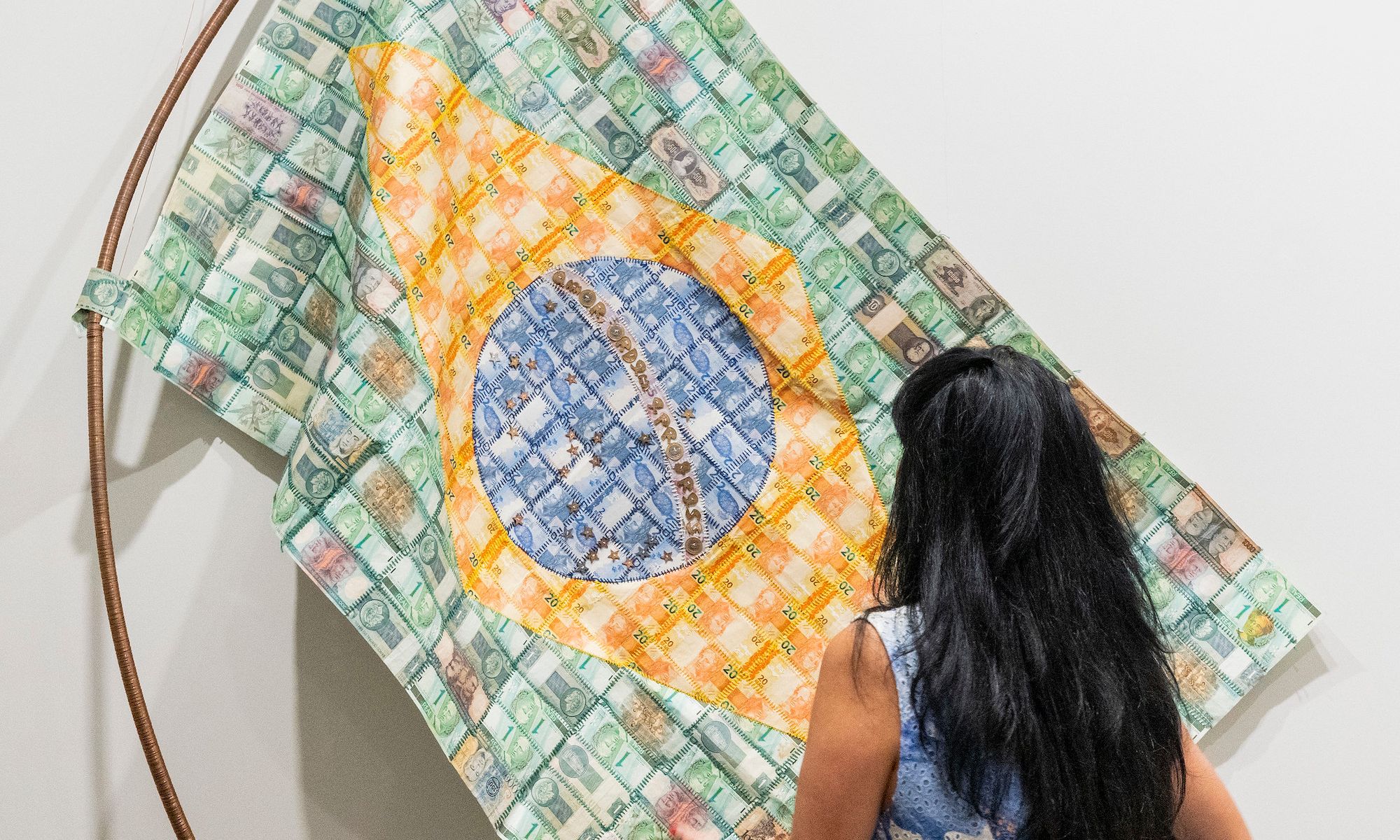A visitor on opening day of SP-Arte's 2023 edition Photo courtesy SP-Arte
The biggest art and design fair in Latin America, SP-Arte, opened its 19th edition on Wednesday with 168 galleries participating. Long lines formed outside Bienal Pavilion in Ibirapuera Park as visitors waited under the hot sun to get into the fair.
“You can feel excitement in the air, both from galleries as well as collectors,” Fernanda Feitosa, founder and director of SP-Arte, tells The Art Newspaper. “The pandemic is completely behind us and we are expecting a great reconnection.” Organisers say they are expecting between 26,000 and 28,000 over the run of the five-day fair.
According to Feitosa, along with the easing of the pandemic has come renewed art market interest in Brazil—both from international galleries looking to connect with the domestic collector community, and Brazilian dealers looking to rekindle relationships with collectors from abroad who may not have visited since 2019. The renewed interest comes at an important time for the Brazilian art world, following the selection late last year of Museu de Arte de São Paulo Assis Chateaubriand (MASP) artistic director Antonio Pedrosa to curate the 2024 Venice Biennale and with the 34th edition Sao Paulo Biennial due to open in September.
The country is also benefitting from improved geopolitical standing following Luiz Inácio Lula da Silva’s victory over Jair Bolsonaro in last year’s presidential election. “Brazil no longer is seen as a pariah in the environmental, social and racial agendas,” Feitosa says. “Events like SP-Arte, the Bienal and Pedrosa’s appointment project a positive image of the country to the art world.”
Wooden benches by Indigenous Brazilian artists on view at SP-Arte Photo courtesy SP-Arte
This year’s fair is marked by a 30% increase in design exhibitors, according to Feitosa, and strong representation of Brazilian Indigenous artists. “The Indigenous artists are at full force this year, with artists such as Carmezia Emiliano and Aislan Pankararu,” she says.
Another standout feature of the fair is Recovering Paradise: Not needing the end to arrive, a special project spread across 13 solo stands and curated by Carollina Lauriano. The curator chose works by established artists such as Rubem Valentim, Emanoel Araujo and Rosana Paulino, as well as younger artists like Laryssa Machada to spark questions about the separation between social, anti-racist movements and environmental and ecological discussions.
“It is an agenda that has been emerging not only locally, but worldwide,” Lauriano says. “These are movements that are within a global agenda, thinking about possible futures, which are more egalitarian, more plural.”
Visitors at opening day of SP-Arte's 2023 edition Photo by Marcelo Camargo/SP Government
This year’s fair features 15 foreign galleries, including Gladstone Gallery from New York, Night Gallery from Los Angeles and Barcelona’s Galería Zielinsky. Among the international galleries making their debuts this year are three Parisian galleries: Galerie Younique, Nil Gallery and Maât Gallery.
"I wanted to explore the Brazilian market,” says Paul William, founder and director of Maât. “There are a lot of art enthusiasts here and they know how to collect art and that is important to me.” William brought works by French, Ghanaian and Nigerian artists to the fair edition and says the response on opening day was very positive. “There has been a lot of interest in my artists, so I am very happy.”
William adds that the bureaucracy involved in trying to get art into the country may discourage foreign galleries from coming to fairs like SP-Arte. “Brazil is not the easiest market to get into, due to customs, taxes and paperwork,” he says.
"Transport logistics for international fairs today has become very expensive and very sparse,” says Feitosa. “We are noticing a greater movement of European galleries within Europe, and American galleries within the Americas.”
Visitors at opening day of SP-Arte Photo courtesy of SP-Arte
Davida Nemeroff, owner of Night Gallery, concurs. “It is a huge commitment and very complicated, something that may not make sense at first, but for us it’s a long-term investment,” she says. Nemeroff became interested in participating in SP-Arte after visiting Rio de Janeiro last year and adding two Brazilian artists—Marcia Falcão and Barrão—to her roster. In its first appearance at SP-Arte, her gallery is showing 16 works by 12 different artists.
Despite problems with logistics and bureaucracy, dealers at this year's SP-Arte remain generally optimistic. “The last four years have been complicated for the country’s culture, so this year people came ready to absorb and consume art like never before,” says Anne Linnet, a partner at Rio de Janeiro-based Inox Gallery. "There has been a lot of interest, a lot of people curious to know what is happening in the world of Brazilian art.”
Linnet says the gallery sold two works in the first two hours of the fair on Wednesday, and that several other pieces had been placed on reserve. "In recent years, SP-Arte has become very attractive to the foreign market,” she says. “This year looks very promising. The dollar is on the rise and I think we are going to see an increase in foreign collectors looking for works by Brazilian artists.”

